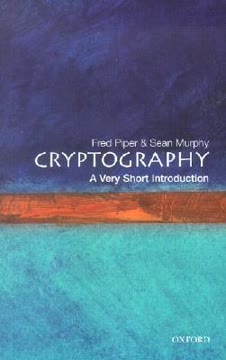Key Takeaways
1. The Global Ocean: Earth's Dominant Feature and Life Support System
How inappropriate to call this planet Earth, when clearly it is Ocean.
Vast and interconnected. The Global Ocean covers 71% of Earth's surface, with an average depth of 3,682 meters. It contains 97% of the planet's water and is divided into five regional oceans: Pacific, Atlantic, Indian, Arctic, and Southern.
Life-sustaining role. The ocean produces half of the oxygen we breathe, stabilizes our climate, sustains coastal ecosystems, provides food, hosts diverse organisms for medicine and biotechnology, and supports recreation and tourism. Economists estimate the annual value of ocean services at US$2.5 trillion, with a total asset base of US$24 trillion.
Under threat. Human activities, including overfishing, habitat destruction, pollution, invasive species, and greenhouse gas emissions, are causing significant changes and damage to ocean ecosystems. This is eroding their ability to provide essential life support systems and services that sustain human well-being and prosperity.
2. Marine Microbes: Invisible Engines of Ocean Productivity
If one added up the weight of all the microbes in the oceans it would account for more than two-thirds of the total marine living biomass.
Microbial diversity. The marine microbiome consists of four main groups: bacteria, archaea, protists, and viruses. These microorganisms are astoundingly abundant, with bacteria occurring at concentrations of a billion or more per liter of seawater.
Primary production. Phytoplanktonic microbes in the sunlit surface layer of the oceans are responsible for almost all primary production in marine environments. Key players include:
- Cyanobacteria like Prochlorococcus
- Diatoms
- Dinoflagellates
- Coccolithophores
Efficient energy flow. Marine microbes form the base of the ocean food web, with energy moving through various pathways:
- Classic food chain: Phytoplankton → Zooplankton → Fish → Top predators
- Microbial loop: DOM/POM → Bacteria/Archaea → Protists → Zooplankton
- Viral loop: Rapid cycling between DOM/POM and microbes, mediated by phages
3. Coastal Ecosystems: Vital Habitats Under Human Pressure
Currently, roughly 44 per cent of the human population, or 3.4 billion people, crowd along the coast or live within 150 kilometres of a coast.
Diverse habitats. Coastal ecosystems include:
- Kelp beds
- Seagrass meadows
- Soft-bottom communities
- Estuaries and mangroves
Human impacts. These ecosystems face numerous threats:
- Pollution (industrial, agricultural, sewage, plastic)
- Overfishing
- Habitat destruction
- Invasive species
- Climate change effects (warming, acidification)
Conservation challenges. Efforts to protect coastal ecosystems include:
- Establishing marine protected areas
- Reducing pollution and plastic waste
- Implementing sustainable fishing practices
- Restoring damaged habitats
- Controlling invasive species
4. Polar Oceans: Unique Environments Facing Rapid Change
Clearly, the Arctic Ocean as we have known it is about to disappear with profound effects on its marine biology.
Arctic vs Antarctic. The polar oceans have distinct characteristics:
- Arctic: Landlocked, shallow shelves, seasonal ice cover
- Antarctic: Open to other oceans, steep continental shelf, seasonal sea ice
Sea ice ecosystems. Both polar regions have unique communities adapted to sea ice:
- Microbes living in brine channels
- Ice algae supporting higher trophic levels
- Specialized animals like polar bears (Arctic) and penguins (Antarctic)
Climate change impacts. Polar regions are warming faster than the global average, leading to:
- Rapid sea ice loss, especially in the Arctic
- Changes in primary production patterns
- Shifts in species distributions
- Potential for new commercial activities (fishing, shipping)
5. Coral Reefs: Diverse Ecosystems in Delicate Balance
These 'rainforests of the ocean' are very complex systems that are home to an incredible diversity of marine organisms—one-quarter to one-third of all marine species—with the number of different species on coral reefs globally totalling in the millions.
Symbiotic foundation. Coral reefs are built on the symbiotic relationship between corals and zooxanthellae:
- Corals provide shelter and nutrients to zooxanthellae
- Zooxanthellae provide up to 95% of corals' energy needs through photosynthesis
Ecosystem services. Coral reefs provide numerous benefits:
- Habitat for diverse marine life
- Food source for millions of people
- Coastal protection from storms
- Tourism and recreation opportunities
Threats and conservation. Coral reefs face multiple stressors:
- Ocean warming and acidification
- Pollution and sedimentation
- Overfishing and destructive fishing practices
- Coastal development
Conservation efforts focus on reducing local stressors and protecting reef systems through marine protected areas and sustainable management practices.
6. Ocean Circulation: Driving Climate and Marine Life
The Great Ocean Conveyor moves at much slower speeds than the wind-driven surface currents—a few centimetres per second—but it moves enormous volumes of water—more than a hundred times the flow of the Amazon River.
Surface currents. Wind-driven gyres in each ocean basin move water horizontally, transporting heat, nutrients, and organisms.
Thermohaline circulation. Deep ocean currents are driven by differences in temperature and salinity:
- Cold, dense water sinks at high latitudes
- Upwelling brings nutrients to the surface in certain regions
- The global conveyor belt connects all ocean basins over a ~1000-year cycle
Climate regulation. Ocean circulation plays a crucial role in:
- Distributing heat around the planet
- Absorbing and storing atmospheric CO2
- Influencing weather patterns and climate
Ecological impacts. Changes in ocean circulation due to climate change could have far-reaching effects on marine ecosystems and global climate patterns.
7. Human Impacts: Threats and Conservation Challenges for Marine Ecosystems
Unfortunately, human activities have been affecting the oceans for many years. It is now clear that overfishing, habitat destruction, pollution, the spread of exotic species, and the emission of climate-changing greenhouse gases are causing significant changes and damage to the oceans and the life forms living within them.
Major threats:
- Overfishing and destructive fishing practices
- Pollution (plastic, chemical, nutrient)
- Climate change (warming, acidification, deoxygenation)
- Habitat destruction (coastal development, bottom trawling)
- Invasive species
Conservation approaches:
- Establishing marine protected areas
- Implementing sustainable fishing practices
- Reducing pollution and plastic waste
- Mitigating climate change impacts
- Restoring damaged habitats
- Controlling invasive species
Future outlook. The health of marine ecosystems is crucial for human well-being and planetary stability. Addressing these challenges requires global cooperation, innovative solutions, and a shift towards sustainable use of ocean resources. The next few decades will be critical in determining the long-term fate of our oceans and the life they support.
Last updated:
FAQ
What is "Marine Biology: A Very Short Introduction" by Philip V. Mladenov about?
- Comprehensive overview: The book provides a concise yet comprehensive introduction to marine biology, covering the oceanic environment, marine life, and the processes that sustain ocean ecosystems.
- Human impact focus: It emphasizes the profound changes humans have brought to the oceans, especially in the Anthropocene era, and discusses the urgent need for sustainable management.
- Structure and scope: The book is organized into chapters that explore ocean environments, biological processes, coastal and deep-sea life, polar and tropical systems, food resources, and the future of the oceans.
- Accessible for all: Written for a general audience, it aims to make marine biology accessible, engaging, and relevant to both students and curious readers.
Why should I read "Marine Biology: A Very Short Introduction" by Philip V. Mladenov?
- Essential for understanding oceans: The book explains why healthy oceans are vital for human survival, climate stability, and biodiversity.
- Up-to-date science: It incorporates the latest research and discoveries in marine biology, including the impacts of climate change and ocean acidification.
- Actionable knowledge: Readers gain insight into the challenges facing marine ecosystems and the actions needed for their protection and restoration.
- Broad appeal: Whether you are a student, educator, policymaker, or ocean enthusiast, the book offers valuable perspectives on the state and future of our oceans.
What are the key takeaways from "Marine Biology: A Very Short Introduction"?
- Oceans are critical: Oceans cover 71% of Earth’s surface, produce half the oxygen we breathe, and regulate climate.
- Human impacts are severe: Overfishing, pollution, habitat destruction, and climate change are rapidly degrading marine ecosystems.
- Marine biodiversity is immense: From microbes to whales, the diversity and adaptations of marine life are extraordinary and essential for ecosystem function.
- Urgent need for action: Sustainable management, marine protected areas, and global cooperation are crucial to restore and protect ocean health for future generations.
How does "Marine Biology: A Very Short Introduction" define and explain the oceanic environment?
- Structure of the oceans: The book details the physical structure of the global ocean, including continental shelves, slopes, abyssal plains, ridges, and trenches.
- Key environmental factors: It explains the importance of salinity, temperature, light, pressure, oxygen, and pH in shaping marine habitats.
- Ocean circulation: Surface currents, gyres, and deep thermohaline circulation (like the Great Ocean Conveyor Belt) are described as drivers of nutrient and heat distribution.
- Human-induced changes: The text highlights how climate change is warming oceans, altering currents, and causing acidification, with significant biological consequences.
What are the main marine biological processes discussed in "Marine Biology: A Very Short Introduction"?
- Microbial dominance: Marine microbes (bacteria, archaea, protists, viruses) are the foundation of oceanic food webs and account for most marine biomass.
- Primary production: Phytoplankton, especially cyanobacteria like Prochlorococcus, drive half of global primary production through photosynthesis.
- Nutrient cycling: The book covers how nutrients like nitrogen, phosphorus, and iron limit or enhance productivity, and discusses phenomena like upwelling and the microbial loop.
- Energy flow: It explains classic and microbial food chains, energy transfer efficiencies, and the unique inverted biomass pyramid of marine systems.
How does "Marine Biology: A Very Short Introduction" describe life in the coastal ocean?
- Diverse habitats: Coastal zones include kelp beds, seagrass meadows, soft-bottom communities, and are among the most productive and biodiverse marine areas.
- Human pressures: Coastal regions face intense impacts from pollution, eutrophication, overfishing, habitat destruction, and invasive species.
- Ecological roles: The book details the importance of keystone species (like sea otters in kelp forests) and the cascading effects of their loss.
- Conservation challenges: It discusses the decline of habitats like seagrass meadows and mangroves, and the need for better management and restoration.
What are the unique features of polar marine biology according to "Marine Biology: A Very Short Introduction"?
- Arctic vs. Antarctic: The Arctic Ocean is landlocked with extensive sea ice and river input, while the Southern Ocean is open, nutrient-rich, and surrounds Antarctica.
- Sea ice ecosystems: Both regions have complex microbial and animal communities living in and under sea ice, supporting unique food webs.
- Keystone species: Antarctic krill and Arctic cod are central to their respective food webs, supporting whales, seals, penguins, and polar bears.
- Climate change impacts: Rapid warming is reducing sea ice, altering productivity, and threatening iconic species and ecosystem stability.
How does "Marine Biology: A Very Short Introduction" explain coral reefs and tropical marine life?
- Coral reef structure: The book explains the biology of reef-building corals, their symbiosis with zooxanthellae, and the formation of atolls, fringing, and barrier reefs.
- Biodiversity hotspots: Coral reefs are described as the "rainforests of the ocean," supporting a quarter to a third of all marine species.
- Threats and resilience: Overfishing, pollution, disease, and especially climate change (bleaching and acidification) are causing rapid reef decline.
- Conservation strategies: The text discusses emerging approaches like identifying climate refugia, assisted gene flow, and active restoration to save coral reefs.
What does "Marine Biology: A Very Short Introduction" reveal about deep-ocean biology?
- Vast, unexplored habitat: The deep ocean (below 500m) makes up 90% of ocean volume but is the least studied environment on Earth.
- Extreme adaptations: Deep-sea organisms have evolved to survive high pressure, cold, darkness, and scarce food, with features like bioluminescence and unique reproductive strategies.
- Chemosynthetic communities: Hydrothermal vents and cold seeps support life based on chemical energy, not sunlight, with remarkable symbioses (e.g., tube worms and bacteria).
- Human impacts: Deep-sea fisheries and potential mining threaten fragile, slow-growing communities like seamount corals and long-lived fish.
How does "Marine Biology: A Very Short Introduction" address food from the oceans and fisheries management?
- Historical overexploitation: The book traces the long history of overfishing, showing that many stocks have been depleted for centuries.
- Modern fishing methods: It explains the impacts of trawling, longlining, and bycatch on marine ecosystems and non-target species.
- Sustainability limits: Global catches have plateaued or declined, with most stocks fully exploited or overfished, and little room for increased wild harvest.
- Solutions: The text advocates for marine protected areas, improved management, consumer awareness, and the role of aquaculture in meeting future food needs.
What future scenarios and solutions for ocean health are proposed in "Marine Biology: A Very Short Introduction"?
- End of wilderness: The book argues that true marine wilderness is nearly gone, with human impacts now global and pervasive.
- Vision for 2050: It outlines a hopeful scenario where international cooperation, better governance, reduced pollution, and expanded marine protected areas restore ocean health.
- Technological advances: Real-time monitoring, improved fisheries management, and new restoration techniques (like gene editing for corals) are highlighted.
- Societal change: The author stresses the importance of public engagement, education, and political will to drive the necessary changes for ocean recovery.
What are the best quotes from "Marine Biology: A Very Short Introduction" by Philip V. Mladenov and what do they mean?
- “How inappropriate to call this planet Earth, when clearly it is Ocean.” — Arthur C. Clarke, quoted to emphasize the dominance and importance of oceans on our planet.
- “The value of healthy, intact ocean ecosystems is thus incalculable—life on Earth as we know it would not exist without them.” — Highlights the essential, irreplaceable services oceans provide to humanity and all life.
- “The challenge for humans now is to find ways to stabilize and prevent the further degradation of marine ecosystems and embark on a path of ocean restoration.” — Calls for urgent action and a shift from conservation to active restoration.
- “The actions humans take in the next few decades will decide the outcome.” — Stresses the critical window of opportunity for reversing ocean decline and ensuring a sustainable future.
Review Summary
Marine Biology: A Very Short Introduction is widely praised for its comprehensive overview of marine ecosystems, biodiversity, and environmental challenges. Readers appreciate the book's accessible writing style, informative content, and systematic approach to covering various aspects of marine life. Many find it an excellent introduction to the subject, highlighting its ability to pack a wealth of information into a concise format. The book is commended for raising awareness about human impacts on oceans and inspiring further interest in marine biology.
Very Short Introductions Series Series












Similar Books






Download PDF
Download EPUB
.epub digital book format is ideal for reading ebooks on phones, tablets, and e-readers.




